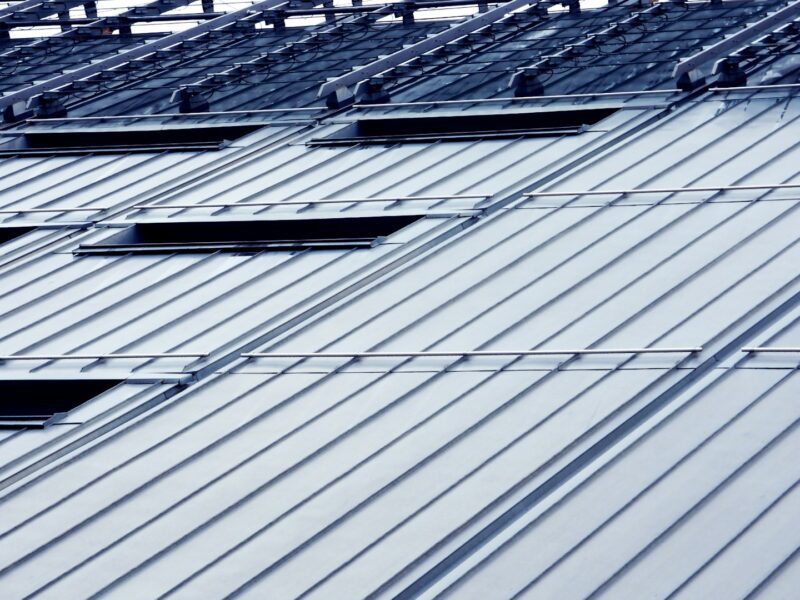A roof replacement is a significant investment that should be carefully planned. There are several tips and strategies that you can follow to ensure your commercial roof replacement goes as smoothly as possible.
The first tip is to estimate your roof’s lifespan. If the roof on your building is nearing the end of its life, it’s time to consider a replacement.
Contents
Estimate Your Roof’s Lifespan
When estimating your roof’s lifespan, there are several factors to consider. These include your area’s roofing material, installation, and weather conditions.
Asphalt shingles, for example, typically last about 22-25 years. Different shingles, such as architectural and luxury options, have a longer lifespan.
Metal roofs are another option that can last decades when installed and maintained correctly. They cost more up-front but can provide superior insulation and durability compared to traditional asphalt shingles.
In addition, metal roofs are safer than shingles and tiles because they do not ignite into flames during a lightning strike or wildfire. This type of roofing is significant for high-rise buildings or other structures vulnerable to fire damage or other hazards.
Understanding how long your roof will last will help you determine when to replace it. You can use it to determine the best roofing materials for your house and how much the cost of commercial roof replacement you should spend.
Incorporate Climate Considerations
One of the most challenging aspects of commercial roof replacement is determining the best time to perform the task. The good news is if you take the time to plan and execute, you’ll be in the good graces of your local commercial roofing contractor. A commercial roof is a significant investment that should be treated with respect and appreciation. It is a major component of your bottom line, so it is essential to get it right the first time. Fortunately, there are many options in your quest for a new and improved roofing system.
Estimate the Cost of Materials
Most of your commercial roof replacement cost will be attributed to your chosen materials. Knowing which materials are best for your building and budget is crucial.
One of the most common roofing options is asphalt shingles. These are moderately priced and can last up to 20 years, depending on the quality of the installation.
Another popular option is modified bitumen. This material is similar to asphalt shingles, but it has additional benefits. For instance, it’s fire-resistant and durable.
Finally, you can opt for a green roof. These are great for energy efficiency and can also help manage drainage concerns.
Another consideration is the location of your commercial building. It is essential because it may impact the cost of labor. For example, if your building is in a city with tight traffic, it may be harder for workers to access the rooftop.
Set Aside a Safety Net
A commercial roof is a crucial part of any building. It protects the property, prevents damage to the interior of the building, reduces insurance rates, and helps business owners qualify for tax credits and other benefits. However, it can also be a costly investment.
Therefore, setting aside a safety net is essential when planning for a commercial roof replacement. Whether a fixed amount or an allotment, this should be a significant component of the budget to cover unexpected repairs or other issues.
As a rule, it’s best to allocate funds for a new roof replacement well before the roof is due to be replaced. It will allow you to plan appropriately and save up for it.
Another way to ensure you’re getting good value for your money is to get regular inspections from your commercial roofing contractor. It will help you catch any problems before they become severe and cost you a lot of money.
Make a Plan for Financing
If you have to replace a roof on your commercial building, you can use financing to help pay for it. However, weigh the pros and cons of borrowing before making a decision.
One option is applying for a home equity loan or line of credit (HELOC). These loans are available to homeowners who have built up significant home equity. They’re also known as second mortgages because they use the value of your real estate property to secure the loan.
Another option is to get a cash-out to refinance on your existing mortgage. It involves recomputing your current mortgage and removing the funds for roof replacement costs.
The money you receive through this financial method will be higher than your existing mortgage balance, which makes it an ideal way to cover your new roofing project. This type of mortgage usually comes with a lower interest rate than traditional loans. It is because the lender assumes less risk by using the existing mortgage as collateral.



